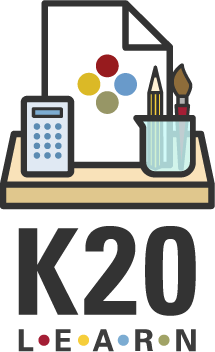Summary
The Power UP: ACT Prep | Celebration & Reflection session is a collaborative, data-informed professional learning experience scheduled after PreACT/ACT results are received. It brings together implementing teachers (English, Math, Science, Social Studies), LEAD Educators, and the supporting professional learning staff to analyze the impact of the ACT Prep curriculum. Using structured reflection, participants will celebrate successes, identify areas for growth, and generate ideas for improving future implementation.
Essential Questions
What does our PreACT/ACT data reveal about the impact of our ACT Prep efforts, and how can we use those insights to strengthen future implementation?
Snapshot
Engage
Participants will reflect on their overall feelings about implementing the Power Up: ACT Prep curriculum now that it’s all done by creating an Emoji mood line.
Explore
Participants look at the test scores data report and find 1-2 objective observations.
Explain
Participants record their feelings and key insights about the data.
Extend
Participants do a SWOT analysis of the implementation of the curriculum.
Evaluate
Participants identify one thing they can do to improve implementation next year and one thing the school as a whole can do to improve.
Materials List
Presentation Slides
Data Report (created from the ACT pre and post prep scores)
Sticky notes
Chart paper
Markers
SWOT analysis handout
Learning Goals
Analyze PreACT data and complete a SWOT reflection to identify at least one strength, one area for improvement, and one actionable strategy to enhance future ACT Prep implementation.
Preparation
Create a data report of student ACT test scores pre-prep and post-prep prior to the meeting.
The report can include on an individual level the following points of data:
Pre-prep composite
Post-prep composite
Point change
Pre and Post scores in each subject
You could include some aggregate data such as:
% of students who gained 1 or more points.
% of students meeting each subject benchmark
Average points gained
A distribution graph showing the number of students to gain 0, 1-2, 3-4, 5+ points in each subject or composite post prep curriculum
Showing the data by subgroups of students to see if their differences in gains across groups show more need for support in the pre-test scores.
Engage
10 Minute(s)
Start off by collecting general feelings about the Power UP: ACT Prep curriculum on an Emoji Reflection mood line. Prior to starting the session, draw a horizontal line across a whiteboard or you can plan to have participants interact directly with slide 5. At one end of the line, draw a wailing sad face emoji, in the middle draw a meh face, and at the other end draw a toothy smiley face.
Ask participants: “Where are you today in terms of how you feel about the ACT prep experience this year?”
On a sticky note, ask participants to write one word that describes their experience implementing the Power Up: ACT Prep curriculum this year and to draw an emoji that fits with their word. They can use one of the three on the line already or a unique one. Then, have participants silently place their sticky note where they think it best fits on the line.
After all sticky notes are placed, you can read some of them aloud to give the whole group a sense of the spectrum of feelings about the curriculum this year.
Keep the line up on the board for the whole session. If you used slide 5, take a picture so that it can be referenced again later. Then ask participants to take their emojis and hold on to them for a future activity.
Explore
5 Minute(s)
Group participants by the ACT subject area they delivered.
Then, have everyone access the pre and post prep curriculum ACT scores data and hand out a piece of chart paper to each group. Display slide 6 and explain that we will be doing an Inside Out chart. They can start with a small rectangle in the center of their chart paper. In this box, they should as a group review the data and write one or two objective observations. These should be straight facts, no interpretation yet.
Ex: Reading scores increased by 1.5 points on average.
Explain
5 Minute(s)
Move on to slide 7. In a slightly larger rectangle with a dotted line through the middle, have them write, on the top half, statements in response to the question, “What are your feelings about the data?”
In the bottom half, have them write statements in response to the question, “What key insights do you take away from this data?”
Extend
30 Minute(s)
Have participants find and look again at their emoji reflection sticky note. Ask the following questions (on slide 8) to and provide a few moments of quiet individual reflection:
What aspects of the experience led to this emoji reflection? Why did you choose this word and emoji?
Now that we’ve observed the data and explored our reactions and insights, have your emotions shifted or stayed the same from how you felt when you made your emoji reflection?
Then use this emotional anchor to transition into a SWOT. Display slide 9 and inform participants that we are going to step away from the data and document our observations about how the program played out as a whole using a SWOT analysis.
Have participants take some time quietly on their own to jot down ideas that come to them in each of the four categories:
Strengths: What worked (in content, implementation, impact)?
Weaknesses: What were challenges?
Opportunities: What’s within our reach if we tweak/fix something?
Threats: What might get in the way next year?
Display slide 10 and regroup participants into 4 groups of mixed subject areas. Assign each group of the four quadrants of SWOT. As a group they should bring their ideas together for that area and place them on a chart paper titled for the quadrant (Strengths, Weaknesses, Opportunities, Threats). Then have groups rotate posters and add anything not already written down until everyone has visited and contributed to all four quadrants.
Hold a whole group discussion sharing what was written on each poster. As you discuss each quadrant of the SWOT, draw out connections, if there are any, to what showed up in the data (slide 11).
Evaluate
10 Minute(s)
Finally, as shown on slide 12, have participants draw one last larger rectangle with a dotted line vertically through the middle on the Inside Out chart. In this box, have group members answer the question for themselves as individuals on the left side of this last rectangle, “What can I do in my role as a result of this data?” And then the group can answer this question for their whole school on the right side, “What can we, as a school, do as a result of this data?”
Provide some time for each group to share what they wrote in the last rectangle about what we can do to improve. Record next steps and share them with all participants in a form, such as an email, that can be referred back to in the following school year.
Research Rationale
Using data to guide decisions is an ongoing process that relies on both quantitative and qualitative information to make evidence-based conclusions (Bowers & Krumm, 2021; Love et al., 2008). This approach should prioritize improving student learning and addressing achievement gaps through teacher-led actions, rather than focusing on student accountability (Bowers & Krumm, 2021; Love et al., 2008; Mandinach & Schildkamp, 2021). Research shows that classrooms using data-informed practices experience higher levels of student achievement and engagement (Albiladi et al., 2020; Debnam et al., 2022).
Resources
K20 Center. (n.d.). Emoji reflections. Strategies. https://learn.k20center.ou.edu/strategy/927
K20 Center. (n.d.) Inside out. Strategies. https://learn.k20center.ou.edu/strategy/93
K20 Center. (n.d.). SWOT (Strengths, Weaknesses, Opportunities, and Threats). Strategies. https://learn.k20center.ou.edu/strategy/4056
Morrissey, B. S., Wilson, S. N., McDaniels-Gomez, P., Willems, K., Goodin, A. S., Williams, L. A., & Williams, L. A. (2025). Power up ACT: Evaluating the efficacy of an embedded ACT curriculum on test score improvement using a repeated measures model [Unpublished manuscript].
Albiladi, W. S., Lasater, K., & Bengtson, E. (2020). Data use among principals and teachers: Divergent paths or common ground? Implications for the leadership preparation programs. Journal of School Administration Research and Development, 5(2), 63–76.
Bowers, A. J., & Krumm, A. E. (2021). Supporting the initial work of evidence-based improvement cycles through a data-intensive partnership. Information and Learning Sciences, 122(9/10), 629–650.
Debnam, K. J., Edwards, K., Maeng, J. L., & Cornell, D. (2022). Educational leaders’ perceptions and uses of school climate data. Journal of School Leadership, 32(4), 362–383.
Love, N., Stiles, K. E., & Mundry, S. (2008). The data coach’s guide to improving learning for all students: Unleashing the power of collaborative inquiry. Corwin Press.
Mandinach, E. B., & Schildkamp, K. (2021). Misconceptions about data-based decision-making in education: An exploration of the literature. Studies in Educational Evaluation, 69, 100842.


